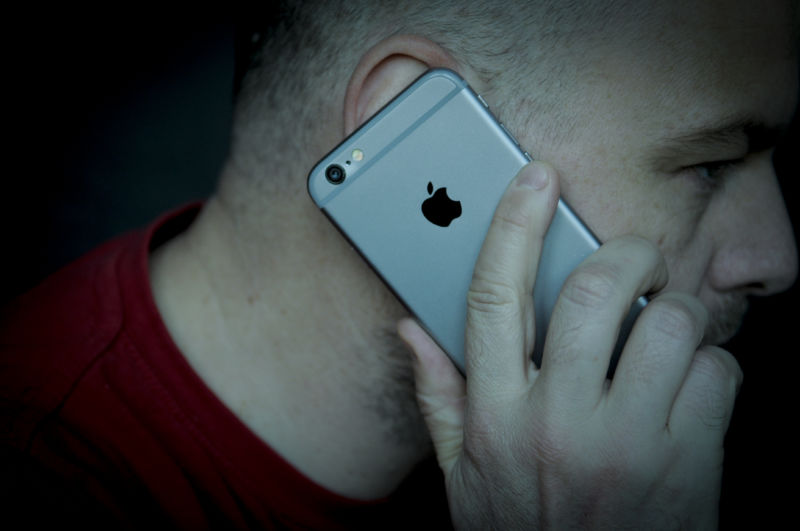California: Here’s how to handle unfounded fears of cell phone cancer

The California Department of Public Health officially issued a guidance Friday on how to reduce exposure to radio-frequency energy released by cell phones—despite a lack of solid scientific data suggesting that such exposure poses any harm.
The guidance follows the Department’s legal defeat earlier this year surrounding the release of such a guidance.
In 2014, public health researcher Joel Moskowitz of the University of California, Berkeley, sued the department after it refused to release the guidance to him. The Department said at the time that its guidance was merely an unapproved, incomplete draft that was not ready for public release and could needlessly raise alarm. In a statement to the San Francisco Chronicle at the time, the Department further explained that it had shelved the guidance years ago in accordance with the latest stance from the Centers for Disease Control and Prevention. At the time—and to this day—the CDC says that there is no definitive data on the subject and that “more research is needed before we know if using cell phones causes health effects.”
Nevertheless, a Sacramento Superior Court judge sided with Moskowitz in the case, and the Department released an unofficial version of the guidance in March of this year.
The updated version released Friday emphasizes that the science on the risks of cell phone use is “still evolving” and that the “scientific community has not reached a consensus.”
Still, for those concerned, the guidance suggests doing a few simple things, such as:
- Using headphones or the speakerphone setting instead of holding your phone to your ear;
- Use texts instead of talking;
- Carrying your phone in a bag or backpack rather than a pocket or your clothes;
- Avoiding phone use when its sending high levels of radio-frequency energy, such as when you’re in a car, streaming content, or when your signal is weak;
- And not keeping your phone by your head while you sleep.
While the steps are rather simple and easy, there’s still no scientific data to suggest that they’re warranted or useful.
Calling all data
The main concern by some public health researchers is that radio-frequency energy from cell phones may cause cancers, particularly brain cancers. Yet there’s no clear mechanism that would justify this concern. Radio-frequency energy is non-ionizing electromagnetic radiation, which doesn’t have enough energy to remove electrons from atoms. It is not known to damage DNA or cause cancerous mutations. It’s only clear potential harm is causing heat, which could lead to burns. That said, most people would notice if their phone was burning their head.
Still, some researchers are convinced that the radiation may pose a cancer risk. A few small epidemiological studies (involving around 1,000 people) and two studies done in France and Sweden suggested a link between high cell phone use and a higher risk of brain cancers. But other small studies failed to replicate the results, finding no link to cancer. These include two done in the US.
Additionally, three larger epidemiological studies, involving tens of thousands of cell phone users across 13 countries, found no link between use and cancers.
While many researchers see the issue as largely settled, researchers at the National Toxicology Program (NTP) blew up the phone-cancer issue again last year. As Ars reported at the time, researchers led by John Bucher released partial results from a multi-year, $25-million rodent study backed by the US government. The authors claimed that their unpublished, non-peer-reviewed rat data suggested a link between cell phone radiation and the development of two types of cancer: brain cancer and a type of cancer in the heart.
But, also as we reported, the study was riddled with red flags. The rats were exposed to extreme levels of radiation over their whole bodies (not just their heads where a phone might be held). The exposure also lasted nine hours every day for two years straight. Yet those heavily-dosed rats somehow lived longer than control rats, which were not exposed to radiation.
Not only did the healthy control rats die earlier, they also had an unusually low rate of tumors for their kind of rat—Sprague Dawley rats. Usually, cancer shows up in one to two percent of these rats naturally, but the rate can be as high as eight percent. Yet none of the dozens to control rats developed tumors before dying early in the study. If just one of the control rats had developed a tumor, it would have wiped out the statistically significant link between phone radiation exposure and tumor development. And, finally, that link was only found in male rats in the study. The female rats inexplicably did not display an increased rate of cancer development over controls.
The researchers’ rat data was only part of the study. They did similar studies on mice but have not released that data yet. They said that they will release their full data for peer review by early 2018.
In a press call, Bucher told reporters that, in terms or human health, the study “may have relevance, it may have no relevance.”
https://arstechnica.com/?p=1233741